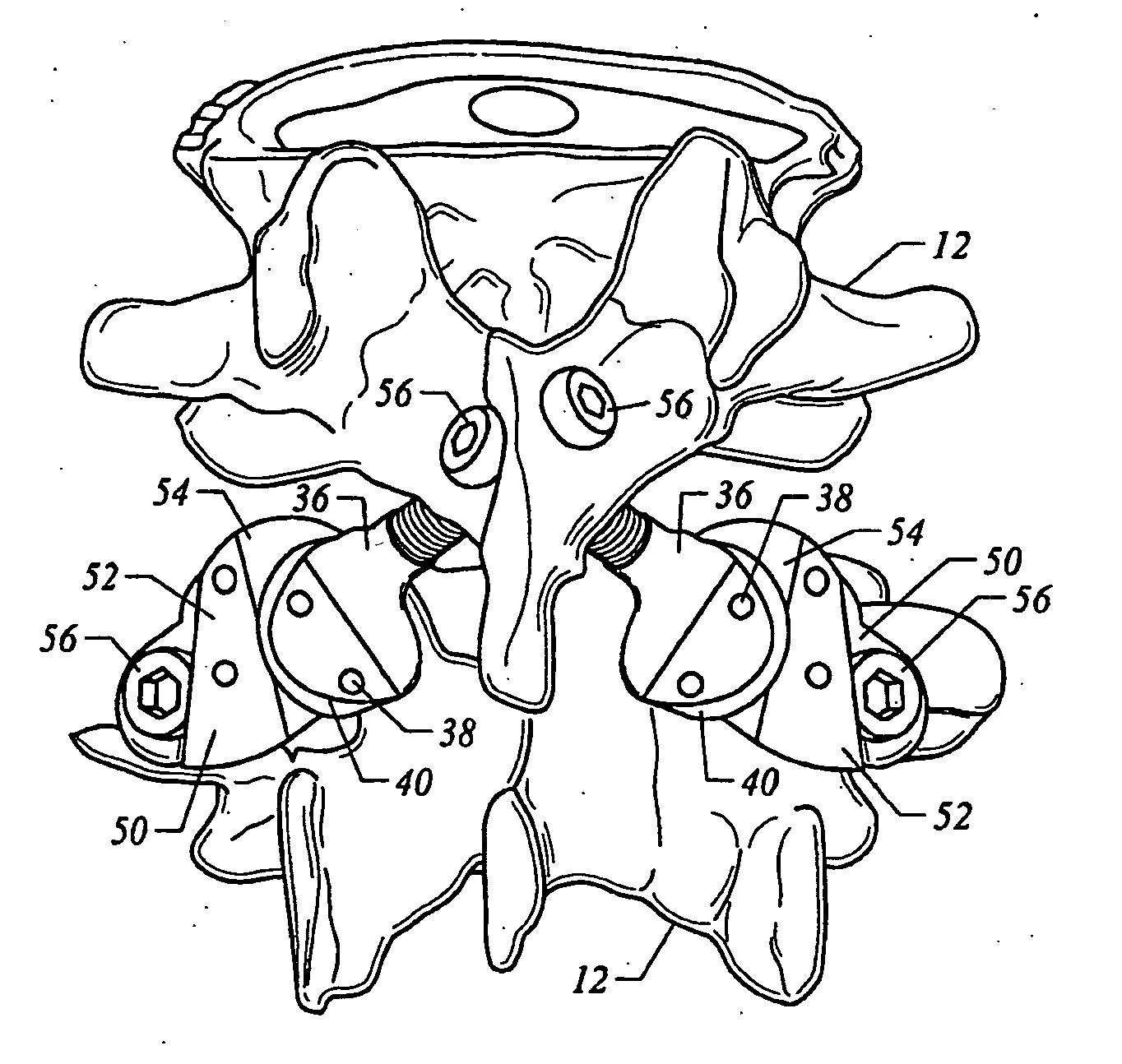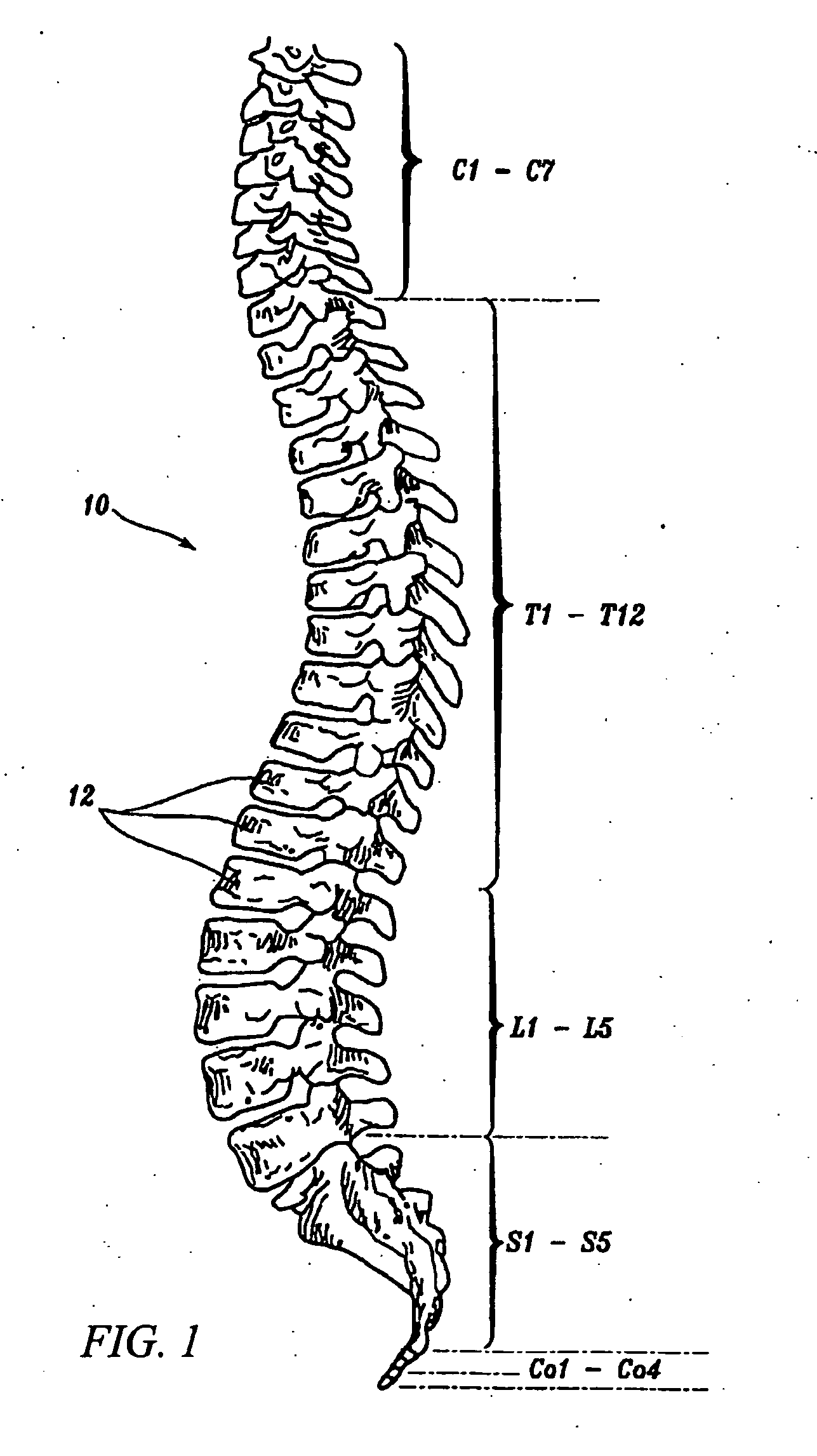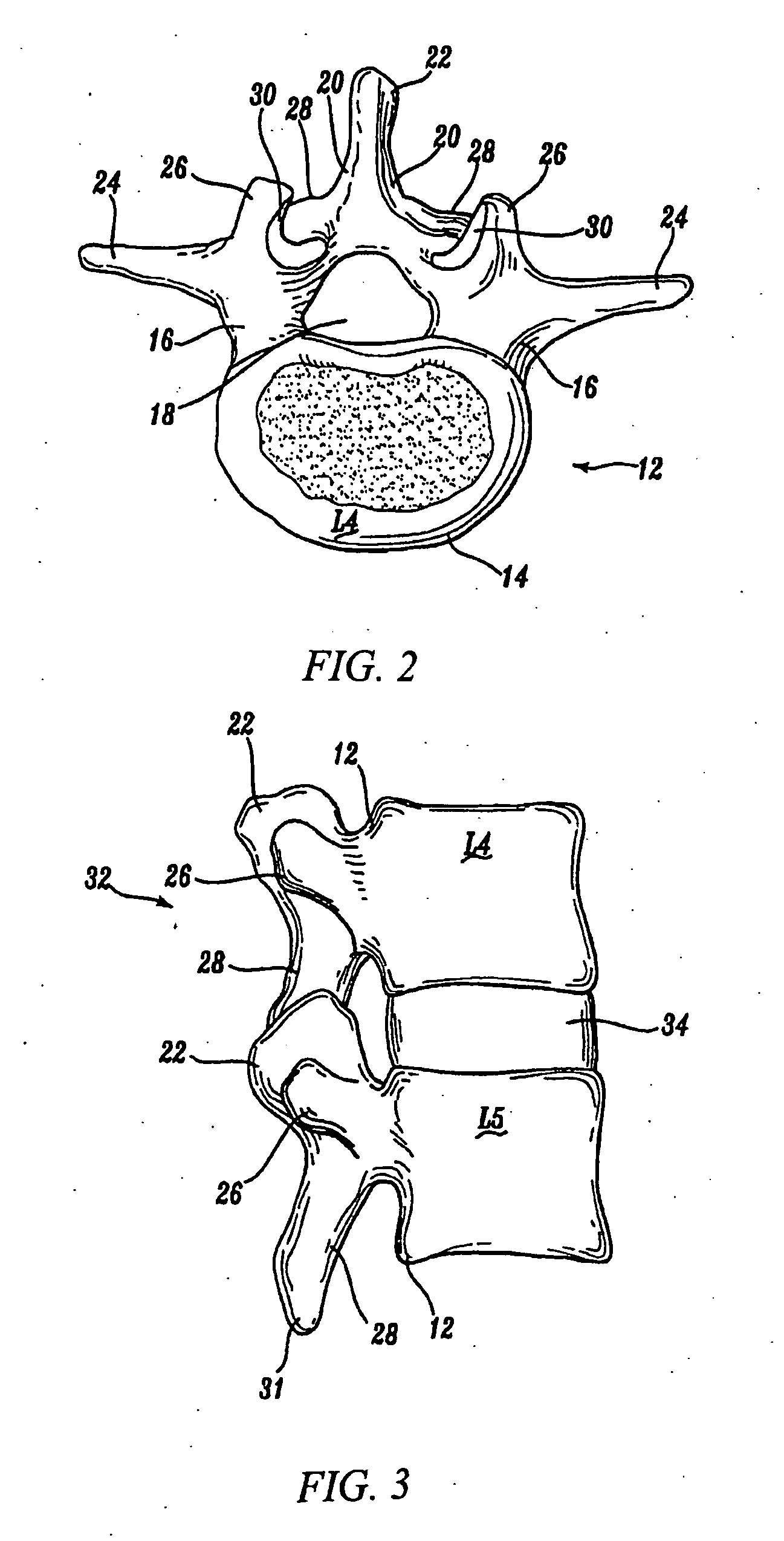Anti-rotation fixation element for spinal prostheses
- Summary
- Abstract
- Description
- Claims
- Application Information
AI Technical Summary
Benefits of technology
Problems solved by technology
Method used
Image
Examples
Embodiment Construction
[0078] Although the disclosure presented herein provides details to enable those skilled in the art to practice various embodiments of the invention, the physical embodiments disclosed herein merely exemplify the invention, which may be embodied in other specific structure. Accordingly, while preferred embodiments of the invention are described below, details of the preferred embodiments may be altered without departing from the invention. All embodiments that fall within the meaning and scope of the appended claims, and equivalents thereto, are intended to be embraced by the claims.
[0079] Embodiments of the present invention may be used, with advantage, on a wide variety of prosthesis devices, particularly spinal prostheses. Some of these prostheses, systems, and methods are discussed in the following applications entitled: “Facet Arthroplasty Devices And Methods”, by Mark A. Reiley, Ser. No. 09 / 693,272, filed Oct. 20, 2000, now U.S. Pat. No. 6,610,091, issued Aug. 26, 2003; “Pros...
PUM
 Login to view more
Login to view more Abstract
Description
Claims
Application Information
 Login to view more
Login to view more - R&D Engineer
- R&D Manager
- IP Professional
- Industry Leading Data Capabilities
- Powerful AI technology
- Patent DNA Extraction
Browse by: Latest US Patents, China's latest patents, Technical Efficacy Thesaurus, Application Domain, Technology Topic.
© 2024 PatSnap. All rights reserved.Legal|Privacy policy|Modern Slavery Act Transparency Statement|Sitemap



